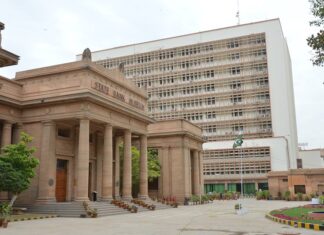There are risks that can be diversified, and there are risks that can be mitigated – but there are some risks that are systemic, and that is where sovereign risk comes into play. Pakistan has been moving from a self-created crisis, to the next, without fail. No business, or economic activity can remain isolated from political volatility, which has escalated significantly over the last fifteen months. During the same period, the economy continues to struggle with historically high general inflation, food inflation hitting the 50% year-on-year growth mark, and employment losses across the board as businesses simply cannot operate due to a restrictive import regime.
Political volatility eventually leads to absence of stability, which inadvertently affects policy continuity. In absence of policy continuity, capital, whether global, or local shies away from taking any long-term risk in the country. This is precisely why for over more than a decade, there has been gradually de-industrialization, as there is no clear plan, or consistent policy to encourage industrialization. Capital is also gradually moving away from the formal economy, into the informal economy, where it is being parked in non-productive assets. Latest money supply numbers indicate that currency in circulation in the economy is close to PKR 9 trillion, as increasing quantum of capital is staying on the sidelines, and out of the formal economy.
As capital stays on the sideline, it gets increasingly difficult to increase any long-term aggregate supply, whereas aggregate demand continues to increase as the population continues to grow. The volatility premium in this case is essentially the excess return that an investor would require to compensate for all the risks that are embedded in the economy. During the last one decade, the largest spurt of investment that took place under the auspices of China Pakistan Economic Corridor (CPEC). Most projects that were initiated had a fairly high guaranteed return component pegged in US$ terms – and that was largely to cover for the risks embedded in the economy. If the country, and its economy are de-risked, and there is more consistency, and less volatility, overall expectation of returns to cover for the risk would automatically decline, making it more affordable to execute large-scale infrastructure, or industrial development projects.
Due to the inherent volatility associated with the politics of the country, or its economy, global risk capital tends to stay away. The equilibrium return required to successfully execute a project in Pakistan under current circumstances would be considerably higher than what was promised in CPEC, largely due to increased risk associated with operating in Pakistan. A business may have the most optimal dynamics to operate, but sovereign risk can make it infeasible. An example for this can be unnecessary intervention of the sovereign in setting prices, or assigning quotas, as is being done to facilitate trade in a restrictive import regime. As supply chains of businesses are disrupted, it becomes increasingly difficult, and costly to rectify the same. In such a scenario, risk capital will shy away from such a country where its supply chains can be broken down due to unnecessary sovereign intervention.
Our policy makers do not understand how sovereign risk actually works. Higher sovereign risk makes a destination unattractive for any foreign direct investment, or even portfolio investment. As foreign direct, and portfolio investment numbers dry up, it is clear that sovereign risk has continued to increase over the last few years, and is at its highest level in a few decades. In such a scenario, it is critical that some saner heads work towards de-escalating, and de-risking sovereign risk, with a very clear long-term plan in place.
In the absence of any de-risking plan, we will continue to maintain high sovereign risk, and thereby continue to attract a high risk premium, making things more expensive for the population of the country, which continues to see its wealth and income erode in local currency. A long-term economic plan can only work if sovereign risk is addressed, and that can be done through reduction in political volatility – without which the country may continue to spiral, putting at risk more than 230 million (and growing) inhabitants of the country.








Thanks for sharing this valuable information. We will keep following you.